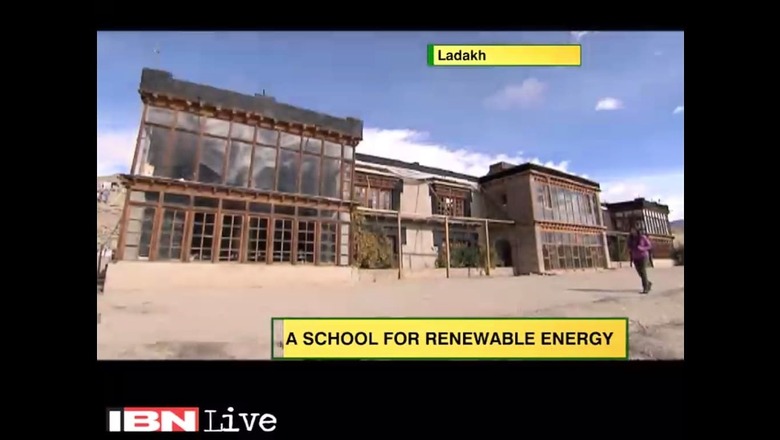
views
Different communities across India are adapting new ways and mitigating the negative impacts of climate change. The main source of water in India's only cold desert, Ladakh, is the winter snowmelt from the mountains. Hence, the entire region is most vulnerable to climate change.
At 15,000 feet and minus five degree temperature is the vast expanse of the Changthang Plateau, with subtle changes taking place in the weather. CNN-IBN went to Ladakh to find out how people and biodiversity would respond to these changes.
There may be a crisis in the region, but there are many who are helping Ladakh get ready for the changes. CNN-IBN met a local legend, Sonam Wangchuk, famous for fighting the existing education system and constructing a school, based entirely on renewable energy.
"The idea of this campus was to create a place where students who failed regular system, get beautiful asylum where they can rebuild and re-launch. At the same time I saw it was missing in the system to live ideas, to just not to learn and read about it but live and imbibe values to launch in real life," said Wangchuk.
At Wangchuk's school, the students don't just sit in class, they feed cattle, use the energy of the sun to bake a cake, and plant organic vegetables. The entire school campus in fact is a living demonstration of low carbon living.
Wangchuk decided six months ago to build an ice Stupa that could store around 1,50,000 litres of water. The ice Stupa, or giant cone of ice, was slated to be as high as 40 metres, and that's why the support of the Army and local people had to be enlisted.
Six months later, the ice Stupa has melted but it has done its job, providing water for the lean season. As I leave I realise. Sonam Wangchuk is leading the people of Ladakh to a low carbon living.




















Comments
0 comment